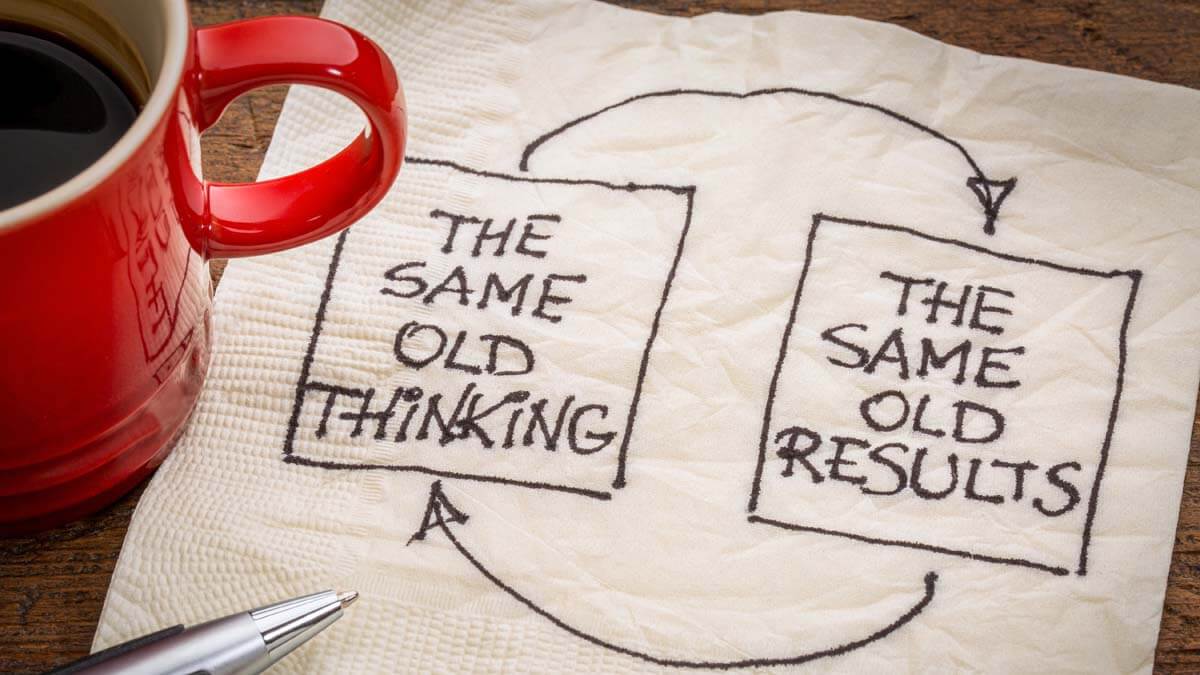Can we use New Product Blueprinting to Test Product Concepts? YES. New Product Blueprinting normally assumes we don’t have a product idea yet. However, Blueprinting can also be leveraged to evaluate the viability of a product concept through a structured, needs-based assessment. This article explores a five-step process for using New Product Blueprinting to validate ... Read More
Blog Category: Product Development
Why not turn your sales force into a learning force?
Your B2B customers have a long list of problems to be solved. But it’s not their job to carefully explain each one and deliver it gift-wrapped to your solution providers. It’s your job. When your sales professionals probe deeply and capture customer needs uniformly in your CRM, you’ll gain unprecedented market insight. And by probing well, your sales team will sell more. We call this Everyday VOC.
More in Everyday VOC white paper, www.EVOCpaper.com
Innovators should worry about errors of omission as much as errors of commission.
When you validate your new product concept with customers, they may tell you if it’s a dud. Great… you’ve avoided the error of commission. But what about the error of omission? If you first enter the customer’s world with B2B divergent interviews, you might learn of unexpected needs that lead to a blockbuster.
More in white paper, Lean Startup for B2B (page 9)
Your unwillingness to walk away from a losing project degrades your overall ability to win.
Consider two new-product success modes. In Success Mode A you launch a well-protected, premium-priced product. In Success Mode B, you thoroughly search the market segment, but find no unmet needs you can address. So you walk. May not sound heroic, but it’s the only way to ensure enough resources for more Success Mode A. Market Satisfaction Gaps let you distinguish Mode A from Mode B.
More in white paper, Market Satisfaction Gaps
Unlike other areas of business, surprises are welcome when you’re developing new products.
Surprises in quality or cost control are unpleasant. But innovation relies on surprises. Without “non-obviousness,” an invention cannot even be patented. When a previously hidden customer outcome becomes known, the discovering supplier has the luxury of seeking solutions in a competition-free environment.
More in 2-minute growth video #25, Let your customers surprise you
All new products are not created equal. You can benefit greatly by studying winners vs. losers.
Some products deliver enormous profits for decades, carrying whole businesses and careers on their sturdy shoulders. And then there are the tired, the poor, the huddled masses of wretched new products you wish were on your competitors’ teeming shores. The most popular way to fail is guessing at customer needs.
More in white paper, Guessing at Customer Needs
There are many ways to improve product development that are popular… and proven to fail.
One is throwing more money at R&D in a Soviet-style arms race. Another is exhorting the troops to do better. An all-time favorite is asking tough project-review questions… but not training teams in the skills needed to find the answers. What if all your teams had the highest possible skills in understanding customer needs? Might this work better?
More in e-book, Reinventing VOC for B2B
Validating hypotheses with customers distorts your entire new product development process.
Confirmation bias is the “tendency for people to favor information that confirms their preconceptions or hypotheses, regardless of whether the information is true.” It’s what happens when you take your lovely new-product hypotheses to customers. This systematically distorts data on customer needs… and that can’t be good for innovation, right?
More in 2-minute video at 35. Insist on data-driven innovation
What if your customer’s stakeholders don’t agree with each other?
According to the authors of The Challenger Customer, “The limiting factor is rarely the salesperson’s inability to get an individual stakeholder to agree to a solution. More often it’s that the stakeholders inside the company can’t even agree with one another about what the problem is.” To overcome this, try Key Account Blueprinting… New Product Blueprinting applied to one large account at a time. This forces stakeholder agreement.
More in white paper, Key Account Blueprinting
The greatest danger in customer interviews is hearing what you want to hear.
Your new product development should start where it ends: with the customer. When you take your “pride and joy” hypothesis to customers and ask their opinion, two bad things can happen: 1) They tell you what they think you want to hear. 2) You hear what you want to hear. Start by uncovering their needs, not testing your pre-conceived notions. And be sure to use quantitative interviews to eliminate confirmation bias.
More in 2-minute video at 35. Insist on data-driven innovation
Why take a “leap of faith” when you could take a leap of confidence—more quickly and cheaply?
Lean Startup methodology refers to “Leap of Faith Assumptions,” and recommends testing assumptions with customers at the first opportunity. For B2B, this “first opportunity” to learn comes before a prototype is created… through VOC interviews to mine the foresight of knowledgeable customers. Don’t miss this B2B adjustment to Lean Startup.
More in white paper, Lean Startup for B2B (page 6)
Got cool technology? Great. Just test it silently with customers.
Avoid “technology push.” But should you just leave your technology quivering on the lab bench? Hardly. Conduct customer interviews without mentioning your technology. If customer outcomes match your technology… wonderful! Otherwise, look for different technology (for this market), or look for another market (for this technology).
More in 2-minute video at 21. Give your hypotheses the silent treatment
Technology development is quite different than product development.
Technology development is science-facing and converts money into knowledge. Product development is market-facing and converts knowledge back into money. Both are critical, but don’t confuse them. And never do any product development until you have quantified, unbiased, unfiltered data on customer needs.
More in white paper, Commercialize technology in six foolproof steps
Validating hypotheses with customers may have been OK once. When fedoras were worn.
In many areas of life, there’s the “old way” and the “new way.” Does your company still develop “hypotheses” internally, and then meet with customers to validate them? This can lead to confirmation bias for you and stifled yawns for your customers. In the “new way,” you start by uncovering customer needs, not by internally “ideating” your solutions.
More in e-book, Reinventing VOC for B2B













